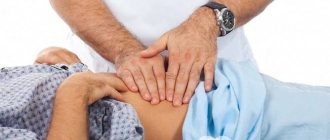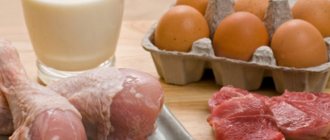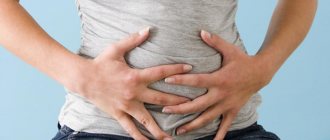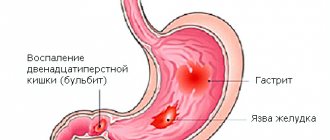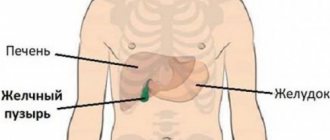Fatty stools or, scientifically, steatorrhea is a pathology of the gastrointestinal tract, which is characterized by the excessive presence of lipid formations in human stool. As a rule, this disease is accompanied by diarrhea, but normal bowel movements or even constipation should also not be excluded.
In any case, the excreted stool always “shins” with fat and is difficult to remove from the surface of the toilet bowl. In today's material we will talk about this phenomenon, its dangers and treatment methods. Interesting? Then be sure to read the article below to the end.
Causes and symptoms
Steatorrhea is an increased excretion of fats from the body in feces.
So, as mentioned earlier, fatty stools or steatorrhea is an increase in lipids in the stool. Naturally, such a phenomenon should not be observed in a completely healthy person and requires due attention on his part.
It is important to understand that steatorrhea differs from other gastrointestinal pathologies by the presence of fats in the stool, while creatorrhoea is accompanied by nitrogenous secretions, and amilorrhea, for example, by starch grains. Fatty stools almost always “shine” accordingly and do not move well from the surface of the toilet bowl.
The cause of such disturbances in the functioning of the stomach and intestines can be many factors.
It is extremely rare that the etiology of fatty stool is a completely normal reaction of the body; often the situation is completely different. Today in gastroenterology there are three main types of steatorrhea based on the etiological factor:
- The first is nutritional steatorrhea, which is a consequence of increased consumption of fat-containing foods and the inability of the gastrointestinal tract to cope with their quantity.
- The second is intestinal steatorrhea, which develops due to dysfunction of the digestive organs in terms of digestion or absorption of lipids.
- The third is pancreatic steatorrhea, which occurs due to malfunction of the pancreas, which poorly produces lipase, which is involved in the breakdown of fatty compounds.
In some cases, nutritional steatorrhea is one-time in nature and does not require proper therapy, since after correction of nutrition it disappears on its own. Other types of fatty stools always require therapy due to their pathological nature. Often their appearance indicates serious problems with the gastrointestinal tract.
The symptoms of any steatorrhea are completely identical. Often the signs of this disease are:
- previously noted - specificity of feces (oily sheen, poor removal from the surface of the toilet bowl, etc.)
- mild abdominal discomfort
- disruption of the bowel movement (from diarrhea to constipation)
- increased rumbling in the gastrointestinal tract
- weight loss
- skin problems (dryness, yellowness, flaking)
- rarely – headaches, severe abdominal discomfort, dizziness and bloating
Having recognized even a few of the symptoms noted above, it is extremely important to visit the clinic and undergo appropriate diagnostics. Do not forget that even seemingly harmless steatorrhea can provoke serious disturbances in the gastrointestinal tract.
Steatorrhea (fatty stool)
Steatorrhea
- increased excretion of fats from the body in feces. With steatorrhea, the feces have an oily, greasy sheen and are difficult to wash off with water. A patient is considered to have steatorrhea if they lose 15 g of fecal fat per day or more. The norm is 7 g per day.
There are 3 types of steatorrhea:
- Type 1 steatorrhea is characterized by the presence of neutral fat in the stool
- Type 2 - the presence of fatty acids, soaps
- Type 3 steatorrhea combines symptoms of types 1 and 2.
Steatorrhea is one of the important clinical signs of exocrine pancreatic insufficiency, however, the presence of steatorrhea does not always indicate a disease of the pancreas; other causes are also possible.
One of the most serious causes of steatorrhea can be celiac disease, a disease of a genetic nature in which the absorption of gluten (gluten) is impaired.
The main direction in the treatment of patients with steatorrhea, especially if it is impossible to eliminate the causes of their development, is replacement therapy with enzyme preparations. About 150 years ago, the Dutch doctor D. Flesch used an aqueous extract from the pancreas of calves to treat steatorrhea in a patient with diabetes mellitus, but many aspects of the use of enzyme preparations still remain controversial (Kostyukevich O.I.).
For most patients with impaired exocrine pancreatic function, taking enzyme preparations with meals is quite sufficient to eliminate steatorrhea. However, in case of steatorrhea of extrapancreatic origin (giardiasis, celiac disease, excessive microbial contamination of the small intestine), replacement therapy with enzyme preparations is ineffective (Kalinin A.V.).
Steatorrhea can result from taking certain medications. In particular, the drug for the treatment of obesity orlistat (trade names: Alli, Xenalten, Xenical, Orlimax, Orlistat, Orsoten, Orsoten slim).
Publications for healthcare professionals regarding steatorrhea
- Sablin O.A., Grinevich V.B., Uspensky Yu.P., Ratnikov V.A. Functional diagnostics in gastroenterology. Educational and methodological manual. – St. Petersburg. – 2002. – 88 p.
- Bayarmaa N., Okhlobystin A.V. The use of digestive enzymes in gastroenterological practice // RMJ. – 2001. – volume 9. – No. 13–14. - With. 598–601.
- Kalinin A.V. Disorders of cavity digestion and its drug correction // Clinical perspectives in gastroenterology and hepatology. – 2001. – No. 3. - With. 21–25.
- Sviridova A.V. Features of diagnosis and treatment of exocrine pancreatic insufficiency in patients with various forms of chronic pancreatitis. Abstract of dissertation. Ph.D., 01/14/04-ext. diseases. MGMSU, Moscow, 2011.
- Maev I.V., Samsonov A.A. Chronic duodenitis (Algorithm for diagnosis and treatment tactics) / Manual for general practitioners, therapists, gastroenterologists: Textbook. - M: GOU VUNMTs MH and SR RF, 2007. 80 p.
- Maev I.V., Kucheryavyi Yu.A., Andreev D.N., Dicheva D.T., Gurtovenko I.Yu., Baeva T.A. Chronic pancreatitis: new approaches to diagnosis and therapy / Educational manual for doctors. M.: FKUZ "GKG Ministry of Internal Affairs of Russia". 2014. 32 p.
Patient Materials
The GastroScan.ru website contains materials for patients on various aspects of gastroenterology:
- “Advice from doctors” in the “Patients” section of the site
- “Popular gastroenterology” in the “Literature” section
- “Popular gastroenterology” in the “Video” section
Back to section
Diagnosis of steatorrhea
Radioisotope research allows us to identify the cause of the pathology
Diagnosis of the problem with fatty stools is always complex. To implement it, it is first better to visit a general practitioner, and after his approval, a gastroenterologist.
In general, these specialists will:
- A thorough examination of the patient’s appearance, identifying all possible signs of steatorrhea.
- Collecting anamnesis by talking with the patient regarding his symptoms.
Purpose of instrumental examination methods, which are the basis of all diagnostics. As a rule, if steatorrhea is suspected and its obvious manifestation, the following is prescribed:
- Microscopic and macroscopic analyzes of stool.
- Ultrasound examination of the gastrointestinal tract (ultrasound).
- Colonoscopy.
- Radioisotope types of diagnostics.
Often, during the examination, it is enough to implement the first two stages of diagnosis, as well as taking stool tests and ultrasound of the gastrointestinal tract. Despite this, for special appointments the patient will have to undergo various studies. Such measures should not be ignored, especially if they are recommended by a specialist.
Causes of steatorrhea
Fatty stools are most often associated with high fat and fiber content in foods.
Typically, steatorrhea is not a serious health problem and occurs after eating certain foods:
• alcohol abuse • fatty fish: salmon, escolar, fatty tuna • nuts, especially whole nuts with the skin intact • coconut and palm kernel oils • whole grains • artificial fats
Severe and prolonged steatorrhea can be a sign of serious diseases such as malabsorption, enzyme deficiency and other disorders of the digestive system.
Diseases and conditions that are accompanied by steatorrhea:
• taking certain medications • weight loss medications • cancer chemotherapy • chronic pancreatitis • renal failure • liver failure • diabetes mellitus • hypoparathyroidism • gallbladder cancer • cholelithiasis • condition after removal of the gallbladder • Crohn's disease (inflammation of the intestines) • fat metabolism disorders, such as Gaucher's disease • congestive heart failure • bacterial gastrointestinal infections, especially Clostridium difficile • parasitic infections, especially Giardia • gastric bypass • tropical sprue • Whipple's disease • cystic fibrosis • amyloidosis • HIV/AIDS • lymphoma, etc.
Methods of treating the disease
Treatment consists of medications and diet
The course of treatment for steatorrhea is determined exclusively by the attending doctor, who is familiar with the results of the examinations and knows exactly the cause of the disease. In most cases, therapy does not require surgical intervention, so conservative therapeutic measures are implemented.
The latter include:
- Firstly, take appropriate medications. It all depends on the factor that provoked the appearance of fatty stools. Usually special enzymes are prescribed that improve the digestion of fats in the gastrointestinal tract. Such preparations can be supplemented with vitamin complexes and various acids to improve digestion.
- Secondly, normalization of lifestyle. Often, it is enough to give up, at least partially, bad habits, restrictions on various types of stress and normal sleep.
- Thirdly – diet. By the way, the diet should be special, the focus of which is to minimize the amount of lipids consumed. On average, patients with steatorrhea are prohibited from eating more than 50-55 grams of fat per day. Mainly the diet should consist of lean meats, fish, a small amount of butter, dairy products with a low amount of fat, vegetables and cereals.
A similar method of treating fatty stool occurs in 85-90% of cases with its diagnosis. In patients with a very specific cause of the disease or with its severe neglect, it is possible to take surgical measures, although this is rare.
Diagnosis and treatment of steatorrhea
To confirm steatorrhea and find out its causes, the doctor may order a stool test for fecal fat and some other diagnostic tests (tests for cystic fibrosis, colonoscopy, etc.).
Treatment of steatorrhea depends on the cause and severity of the condition.
Mild cases can often be overcome without drug treatment.
General recommendations for steatorrhea:
• abstain from smoking and alcohol • drink enough fluids • limit fatty foods and fiber • add fat-soluble vitamins A, D, E and K to your diet • focus on vitamin B12, B9, calcium, magnesium and iron • for heartburn – over-the-counter antacids • for diarrhea - loperamide or diosmectite • for bloating, take simethicone
People with severe or chronic steatorrhea need medical attention. If mild cases do not threaten anything other than mild dehydration and minimal discomfort, then with severe malabsorption of fats, serious complications are possible - even failure of internal organs.
Medicines for steatorrhea:
• antidiarrheal drugs • intravenous solutions for dehydration • pancreatic enzyme preparations • proton pump inhibitors (PPIs) • essential fatty acids
Fat in the stool can be a sign of a “harmless” error in the diet, as well as a symptom of life-threatening diseases.
Chronic, severe steatorrhea is a reason to go to the hospital for examination!
Konstantin Mokanov: Master of Pharmacy and professional medical translator
Causes of fatty stools in adults
The main factors that provoke the accumulation of fatty acids in feces:
- Failures of the pancreas, which stops synthesizing lipase. The enzyme breaks down fats into fatty acids and glycerol during digestive processes in the stomach. Insufficient lipase synthesis causes poor digestion of food and the appearance of neutral fat in the coprogram.
- Poor absorption by the intestines, rapid evacuation of food from the body. The pathology is caused by impaired motility of the gastrointestinal tract, when food moves through it too quickly without having time to be processed.
- Lack of bile, which transforms fats into a thin emulsion, helping to quickly break them down. If there is little bile in the intestines, this negatively affects the process of processing fatty foods.
Among the pathological conditions that cause steatorrhea (the appearance of fatty acids in stool) are:
- kidney diseases;
- fermentative and putrefactive dyspepsia;
- birth defects;
- liver diseases (hepatitis, cyst, tumors, amyloidosis, cirrhosis, hemochromatosis);
- pathologies of the pancreas (pancreatitis, narrowing of the Virsugov duct, Solinger-Ellison syndrome);
- diseases of the digestive system (enteritis, Whipple's disease, tumors, amyloidosis, resection after surgery, diverticulosis);
- excessive consumption of fatty foods;
- problems with the gallbladder and its ducts (cholangitis, giardiasis, cholecystitis, cholelithiasis);
- damage to the gastrointestinal tract by eczema, psoriasis.
Symptoms of steatorrhea
The main signs of fatty stool in an adult are that it becomes liquid, oily, and often gray in color. The volume of bowel movements becomes larger with the same amount of food consumed. During the day the number of urges increases.
With steatorrhea (the appearance of fatty acids in the stool of an adult), the patient may complain of bloating, rumbling in the abdomen, weight loss, and nausea. General health worsens, dizziness and headaches appear. The patient complains of weakness, drowsiness, and fatigue. The skin becomes dry and peels. Stomatitis, inflammation, and bleeding gums may occur.
Description of the condition when fatty acids are found in stool analysis
The main function of the gastrointestinal tract is to process food and absorb various nutrients from it. Healthy stool contains a maximum of 5 grams of fatty acid salts. They are usually completely absorbed in the gastrointestinal tract. Intestinal pathologies can lead to steatorrhea (aka fatty stools). Then the concentration of fat in feces exceeds the normal level, sometimes reaching even 100 grams.
With steatorrhea, fatty particles are present in the stool of an adult. The condition is accompanied by a frequent urge to defecate. Often there is diarrhea, less often - difficulties, constipation. The consistency of stool may vary. General characteristics: profuse discharge, grayish color. The increased content of undigested fat (fatty acids in feces) leaves an oily residue on the walls of the toilet when flushed.
Fatty acids can be found in food in pure form or serve as a product of neutral fats processed by the stomach. The feces of breastfed and bottle-fed babies may contain small amounts of fatty acid crystals. In older children and adults, healthy stool does not contain foreign fat impurities.
